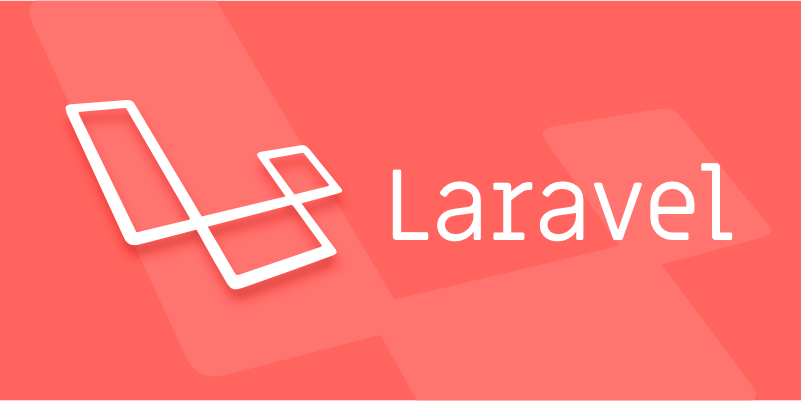Working with Eloquent Query Scopes in Laravel?
Jul 06, 2025 am 12:48 AMEloquent query scope improves code reusability and readability by encapsulating common query conditions, and is divided into local scope and global scope. 1. The local scope is defined in the model and implemented with methods starting with scope. For example, scopeActive() is used to filter and activate users. User::active()->get() is directly used when calling. It supports queries with parameters, such as scopeRole($query, $role) can be used through User::role('admin')->get(). 2. Global scope automatically applies unified filtering rules in all queries by implementing the Scope interface and overwriting the apply method. For example, if the default query user with status active by querying by default, addGlobalScope needs to be registered in the model, or temporarily removed through withoutGlobalScopes(). When using it, you should avoid complex logic, clear naming, and reasonable use of global scope, and ensure effectiveness through testing.

Using Eloquent Query Scopes in Laravel allows you to reuse query logic more gracefully. It is not a master skill, but it can make the code clearer and easier to maintain if used properly.

What is Eloquent query scope?
Eloquent's query scope is essentially an encapsulated query condition that can be attached to the model's query. You can understand it as a "preset filter". For example, you often need to find out all enabled users and write this condition into a scope.

There are two types of query scopes:
- Local Scopes : Methods starting with
scopecan be defined in the model. - Global Scopes : Implement
Illuminate\Database\Eloquent\Scopeinterface, suitable for all queries in the entire model.
How to define and use local query scope?
This is the most common and easiest way to get started. For example, if you want to filter out all "activated" users, you can write it like this in the User model:

public function scopeActive($query)
{
return $query->where('status', 'active');
}Then when calling:
User::active()->get();
You can combine multiple scopes, such as:
User::active()->verified()->orderBy('created_at')->get();
The benefits of this approach are intuitive, readable, and do not require repeating the same where conditions every time.
Tip: If your scope requires parameters, such as filtering users based on roles, you can also add parameters:
public function scopeRole($query, $role) { return $query->where('role', $role); }When using the parameters:
User::role('admin')->get();
Global scope is more suitable for unified filtering rules
If you want certain query conditions to be automatically applied to all queries, such as deleted_at IS NULL in the soft delete mechanism, you can use the global scope.
Creating a global scope requires implementing the Scope interface and overriding the apply method. For example, we want to only display users whose status is active by default:
use Illuminate\Database\Eloquent\Builder;
use Illuminate\Database\Eloquent\Model;
use Illuminate\Database\Eloquent\Scope;
class ActiveUserScope implements Scope
{
public function apply(Builder $builder, Model $model)
{
$builder->where('status', 'active');
}
}Then register this scope in the model:
use Illuminate\Database\Eloquent\Model;
class User extends Model
{
protected static function booted()
{
static::addGlobalScope(new ActiveUserScope());
}
} In this way, every time the User model is queryed where status = 'active' will be automatically added.
Note: If you want to temporarily remove the global scope, you can use:
User::withoutGlobalScopes()->get();
Common misunderstandings and precautions
- Don't put all complex logic into scope : scope is suitable for the conditional splicing of a single responsibility. It is recommended to extract the logic that is too complex and put it in the Repository or Service layer.
- The naming should be clear and concise : for example,
scopeVerified()is obviously easier to understand thanscopeCheckIfEmailConfirmed().- Avoid overuse of global scope : Although it is convenient, it may make it difficult for novices to see why the data is low, which makes it difficult to debug.
- Remember to test whether the scope is effective : especially when multiple scopes are nested or combined, unit testing can help you avoid many hidden problems.
Basically that's it. Query scope is not a must-have feature, but using it in the right place will make your code look more professional and tidy.
The above is the detailed content of Working with Eloquent Query Scopes in Laravel?. For more information, please follow other related articles on the PHP Chinese website!

Hot AI Tools

Undress AI Tool
Undress images for free

Undresser.AI Undress
AI-powered app for creating realistic nude photos

AI Clothes Remover
Online AI tool for removing clothes from photos.

Clothoff.io
AI clothes remover

Video Face Swap
Swap faces in any video effortlessly with our completely free AI face swap tool!

Hot Article

Hot Tools

Notepad++7.3.1
Easy-to-use and free code editor

SublimeText3 Chinese version
Chinese version, very easy to use

Zend Studio 13.0.1
Powerful PHP integrated development environment

Dreamweaver CS6
Visual web development tools

SublimeText3 Mac version
God-level code editing software (SublimeText3)
 How to set environment variables in PHP environment Description of adding PHP running environment variables
Jul 25, 2025 pm 08:33 PM
How to set environment variables in PHP environment Description of adding PHP running environment variables
Jul 25, 2025 pm 08:33 PM
There are three main ways to set environment variables in PHP: 1. Global configuration through php.ini; 2. Passed through a web server (such as SetEnv of Apache or fastcgi_param of Nginx); 3. Use putenv() function in PHP scripts. Among them, php.ini is suitable for global and infrequently changing configurations, web server configuration is suitable for scenarios that need to be isolated, and putenv() is suitable for temporary variables. Persistence policies include configuration files (such as php.ini or web server configuration), .env files are loaded with dotenv library, and dynamic injection of variables in CI/CD processes. Security management sensitive information should be avoided hard-coded, and it is recommended to use.en
 What is Configuration Caching in Laravel?
Jul 27, 2025 am 03:54 AM
What is Configuration Caching in Laravel?
Jul 27, 2025 am 03:54 AM
Laravel's configuration cache improves performance by merging all configuration files into a single cache file. Enabling configuration cache in a production environment can reduce I/O operations and file parsing on each request, thereby speeding up configuration loading; 1. It should be enabled when the application is deployed, the configuration is stable and no frequent changes are required; 2. After enabling, modify the configuration, you need to re-run phpartisanconfig:cache to take effect; 3. Avoid using dynamic logic or closures that depend on runtime conditions in the configuration file; 4. When troubleshooting problems, you should first clear the cache, check the .env variables and re-cache.
 How to make PHP container support automatic construction? Continuously integrated CI configuration method of PHP environment
Jul 25, 2025 pm 08:54 PM
How to make PHP container support automatic construction? Continuously integrated CI configuration method of PHP environment
Jul 25, 2025 pm 08:54 PM
To enable PHP containers to support automatic construction, the core lies in configuring the continuous integration (CI) process. 1. Use Dockerfile to define the PHP environment, including basic image, extension installation, dependency management and permission settings; 2. Configure CI/CD tools such as GitLabCI, and define the build, test and deployment stages through the .gitlab-ci.yml file to achieve automatic construction, testing and deployment; 3. Integrate test frameworks such as PHPUnit to ensure that tests are automatically run after code changes; 4. Use automated deployment strategies such as Kubernetes to define deployment configuration through the deployment.yaml file; 5. Optimize Dockerfile and adopt multi-stage construction
 Explain Laravel Eloquent Scopes.
Jul 26, 2025 am 07:22 AM
Explain Laravel Eloquent Scopes.
Jul 26, 2025 am 07:22 AM
Laravel's EloquentScopes is a tool that encapsulates common query logic, divided into local scope and global scope. 1. The local scope is defined with a method starting with scope and needs to be called explicitly, such as Post::published(); 2. The global scope is automatically applied to all queries, often used for soft deletion or multi-tenant systems, and the Scope interface needs to be implemented and registered in the model; 3. The scope can be equipped with parameters, such as filtering articles by year or month, and corresponding parameters are passed in when calling; 4. Pay attention to naming specifications, chain calls, temporary disabling and combination expansion when using to improve code clarity and reusability.
 PHP development user permission management monetization PHP permission control and role management
Jul 25, 2025 pm 06:51 PM
PHP development user permission management monetization PHP permission control and role management
Jul 25, 2025 pm 06:51 PM
User permission management is the core mechanism for realizing product monetization in PHP development. It separates users, roles and permissions through a role-based access control (RBAC) model to achieve flexible permission allocation and management. The specific steps include: 1. Design three tables of users, roles, and permissions and two intermediate tables of user_roles and role_permissions; 2. Implement permission checking methods in the code such as $user->can('edit_post'); 3. Use cache to improve performance; 4. Use permission control to realize product function layering and differentiated services, thereby supporting membership system and pricing strategies; 5. Avoid the permission granularity is too coarse or too fine, and use "investment"
 How to build a content payment platform through PHP How to implement PHP paid reading system
Jul 25, 2025 pm 06:30 PM
How to build a content payment platform through PHP How to implement PHP paid reading system
Jul 25, 2025 pm 06:30 PM
To build a PHP content payment platform, it is necessary to build a user management, content management, payment and permission control system. First, establish a user authentication system and use JWT to achieve lightweight authentication; second, design the backend management interface and database fields to manage paid content; third, integrate Alipay or WeChat payment and ensure process security; fourth, control user access rights through session or cookies. Choosing the Laravel framework can improve development efficiency, use watermarks and user management to prevent content theft, optimize performance requires coordinated improvement of code, database, cache and server configuration, and clear policies must be formulated and malicious behaviors must be prevented.
 How to create a helper file in Laravel?
Jul 26, 2025 am 08:58 AM
How to create a helper file in Laravel?
Jul 26, 2025 am 08:58 AM
Createahelpers.phpfileinapp/HelperswithcustomfunctionslikeformatPrice,isActiveRoute,andisAdmin.2.Addthefiletothe"files"sectionofcomposer.jsonunderautoload.3.Runcomposerdump-autoloadtomakethefunctionsgloballyavailable.4.Usethehelperfunctions
 How to build a log management system with PHP PHP log collection and analysis tool
Jul 25, 2025 pm 08:48 PM
How to build a log management system with PHP PHP log collection and analysis tool
Jul 25, 2025 pm 08:48 PM
Select logging method: In the early stage, you can use the built-in error_log() for PHP. After the project is expanded, be sure to switch to mature libraries such as Monolog, support multiple handlers and log levels, and ensure that the log contains timestamps, levels, file line numbers and error details; 2. Design storage structure: A small amount of logs can be stored in files, and if there is a large number of logs, select a database if there is a large number of analysis. Use MySQL/PostgreSQL to structured data. Elasticsearch Kibana is recommended for semi-structured/unstructured. At the same time, it is formulated for backup and regular cleaning strategies; 3. Development and analysis interface: It should have search, filtering, aggregation, and visualization functions. It can be directly integrated into Kibana, or use the PHP framework chart library to develop self-development, focusing on the simplicity and ease of interface.






